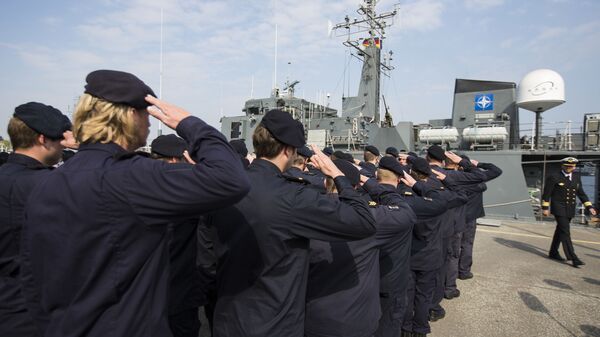Even though they have been in NATO for 13 years now, the Latvian, Lithuanian and Estonian Navies have to make do with long pensioned-off ships donated to them by Britain, the Netherlands, and Norway.
They immediately pale in comparison with the naval might of Russia’s Baltic Fleet.
Eastern Flank
The Latvian Navy, the strongest of them all, consists of 18 vessels built back in the 1980s: Tripartite minesweepers, Storm-class Coast Guard cutters and KBV patrol boats. Plus a newly-built Skrunda Coast Guard catamaran, that is virtually unarmed.
The Estonian Navy is even less numerous with just six ships, including the 58-year-old A433 Wambola, which once used to be a German minesweeper.
None of the Baltic countries’ navies carries any missile weapons on board, Alexander Khrolenko wrote.
Armed (Sort Of)
Upon closer inspection, the Baltic countries’ navies ignore the wide array of threats now existing on the high seas. For example, their
British-made Hunt minesweepers harken back to the 1980s. Each of these veteran ships has a plastic hull, is powered by a pair of 1,900 hp diesel engines and has maximum speed of 17 knots. Their armament is equally unimpressive: a single Bofos 40 mm antiaircraft gun and a pair of 20 mm cannons.
In addition they have a navigation radar, a Mathilda-class electronic jammer and a Type-193M sonar.
The Storm-class Coast Guard cutter is equally fascinating. Built in Norway in the early 1960s, it has a displacement of 100 tons, is 36 meters long and 6 meters wide.
A pair of diesel engines, packing 3,000 hp each, ensures a maximum speed of up to 32 knots. The one in the Lithuanian Navy was built in 1967 and decommissioned in 2000 before being sold to the Baltic nation.
Notably, while in the service with the Norwegian Navy, the Storms carried Penguin Mk1 anti-ship missiles with infrared homing and a range of 20 kilometers [12 miles].
However, before the boats were supplied to the Baltics, the missiles were taken out leaving behind antiquated 76 mm guns and the 70 mm Bofos anti-aircraft cannon.
By 2000, all the 19 Storm boats had been decommissioned from the Norwegian Navy, seven were handed over to Latvia, three went to Lithuania and one to Estonia. The same with the Flyvefisken patrol boats.
Because everyone in the West knows full well that “Russia is preparing for a showdown with NATO in the Baltic region,” the long-outdated weapons
Brussels supplies to its “lesser brothers” underscores its real attitude towards them as inevitable victims of “the global process,” Alexander Khrolenko concluded.




